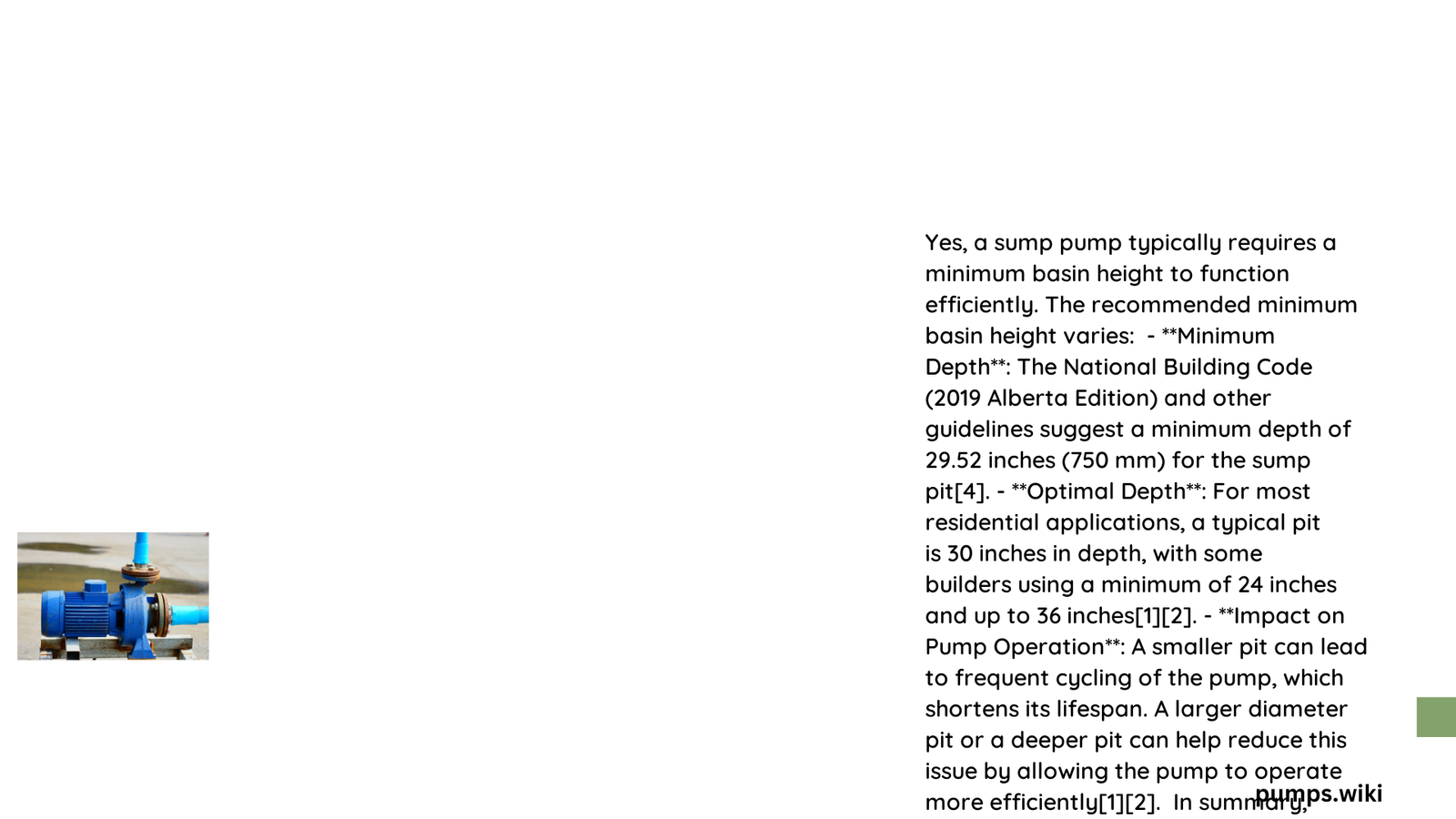Sump pump basin height is a critical factor in effective water management and basement protection. Homeowners and contractors must understand the precise requirements for basin depth, diameter, and installation to prevent water damage, ensure proper drainage, and maximize the pump’s operational efficiency. The minimum basin height and specifications directly impact the system’s performance, longevity, and ability to manage groundwater effectively.
What Is the Standard Minimum Basin Depth for Sump Pumps?
The standard minimum basin depth for sump pumps typically ranges between 24 to 36 inches. This depth range is crucial for several important reasons:
- Optimal Water Collection: Provides sufficient space for water accumulation
- Reduces Pump Cycling: Minimizes frequent on/off pump operations
- Prevents System Strain: Helps extend the pump’s mechanical lifespan
Basin Depth Comparison Table
| Basin Depth | Recommended Use | Performance Impact |
|---|---|---|
| 24 inches | Residential Standard | Moderate Water Management |
| 30 inches | Enhanced Performance | Reduced Pump Cycling |
| 36 inches | High Water Volume Areas | Maximum Water Handling |
Why Does Basin Size Matter for Sump Pump Efficiency?

Basin size directly influences the pump’s ability to manage water volume and prevent potential flooding. Key considerations include:
- Diameter Specifications
- Typical range: 18 to 24 inches
- Standard capacity: Approximately 26 gallons
-
Larger diameters handle increased water flow
-
Volume Handling Capacity
- Sandy soil: 14 gallons per minute per 1,000 square feet
- Clay soil: 8 gallons per minute per 1,000 square feet
What Factors Determine Proper Sump Pump Basin Installation?
Several critical factors influence basin height and installation:
- Groundwater Levels: Local water table characteristics
- Soil Composition: Drainage and water absorption rates
- Home Foundation Design: Lowest point for water collection
- Regional Climate: Precipitation and flooding potential
Recommended Installation Practices
- Position basin at basement’s lowest point
- Ensure GFCI-protected electrical outlet nearby
- Install protective lid to prevent debris entry
- Direct discharge line at least 10 feet from foundation
How Can Homeowners Prevent Sump Pump Basin Issues?
Proactive maintenance and understanding can help prevent common problems:
- Avoid Short Cycling: Adjust float switch settings
- Regular Inspection: Check basin depth and pump functionality
- Professional Assessment: Consult drainage experts for complex situations
Warning Signs of Inadequate Basin Configuration
- Frequent pump activation
- Incomplete water removal
- Unusual pump noise
- Water accumulation around foundation
What Are the Consequences of Improper Basin Height?
Incorrect basin height can lead to significant problems:
- Premature pump failure
- Increased energy consumption
- Potential basement flooding
- Reduced system efficiency
- Higher maintenance costs
Technical Considerations for Basin Height Selection
Professionals recommend considering:
- Total Dynamic Head: Vertical water lift distance
- Pump Capacity: Gallons per minute rating
- Water Inflow Rate: Expected volume during peak conditions
Expert Tip
Always consult local building codes and consider professional assessment for precise basin height determination.
Conclusion
Understanding sump pump basin height requirements is essential for effective water management. By following recommended guidelines and considering specific environmental factors, homeowners can ensure optimal system performance and protect their property from potential water damage.
Reference:
– RadonSeal Sump Pit Sizing
– WATERPROOF Magazine Pump Sizing
– MucciA Plumbing Sump Pump Guidelines
